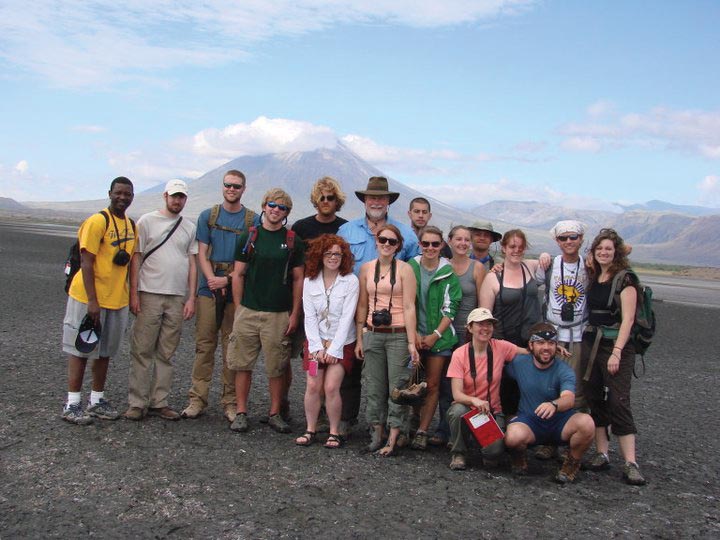Student Perspective: Discovering Africa
September 8, 2011
Last May, the Department of Geography offered a two week course in Tanzania, led by Drs. Francis Koti and Greg Gaston. I’ve been interested in African development for several semesters, so I had to take this journey.
We had a group of 15 students-mostly geography majors-with a few graduate students and social work majors. When we arrived at Kilimanjaro Airport, we met our driver for the trip, Mandeo, and our faithful guide and soon to be friend, Simon. We pulled into the gates of Kundayo Apartments, our “home away from home” at night, so we didn’t know what to expect. However, after 30 hours of travel, we were relieved to have a clean room and hot food.
When our bus pulled up to the money exchange, several men with souvenirs rushed us, and the haggling began! This was the first of many encounters with overzealous merchants.
The next day, we hiked up a muddy mountain side to visit Ngiresi Secondary School. After the school, we ascended further to a waterfall. On the way, I made a friend. She was probably six, had a bald head, tattered school uniform, too small shoes and a snotty nose. She was beautiful! She ran up to me smiling and grabbed my hand. I greeted her in Swahili and then we walked hand-in-hand for about 15 minutes, stealing glances and smiling at each other.
While I ache for her struggles, I’m ecstatic that she’s attending school. We met many kids that couldn’t go to school. In Tanzania, school isn’t free and uniforms are required. That’s one of the problems in their development. Without equal access, it’s impossible to break the poverty cycle.
We then left Arusha and headed north into the plains. First we went to the Oldupai Gorge, and it was incredible to hike in the “cradle of humankind.”
Later that day, we went on a safari, and it was like watching a National Geographic film! Riding through the Ngorongoro Crater and seeing a hyena, elephant, lion, zebra, warthog and wildebeest than we could count is an experience that will last us all a lifetime.
On the way to Lake Natron, we ate boxed lunches on the edge of a massive crater in the middle of the Engaruka Plains. The next day we saw flamingos nesting at Lake Natron and hiked through a canyon to a large waterfall. Even though we were far removed from any cities, our land cruisers were a target for locals. Seeing them aggressively trying to sell souvenirs made me realize Tanzanians needs business training.
As more tourists venture to remote areas for safari, the locals need to learn the most productive ways of capitalizing on this market. After a short stay at Kundayo Apartments, we switched gears and headed south to Dar es Salaam, which has 4.5 million residents, no official sanitation department and rolling blackouts.
We attended lectures at University of Dar es Salaam to study economic development. Seventy-five percent of their economic activity is untaxed, which affects the government’s ability to provide basic infrastructure and social services.
Next, we took a ferry to the island of Zanzibar, where we had a day at the beach. Later, we made the long trip back to Arusha, and spent another day at Ngiresi School. On our last night at Kundayo Apartments, they prepared a feast and a group performed traditional dances.
While it was sad to say goodbye, I think I can safely say we were all a little ready to come home. This trip showed me that I’m stronger than I thought. At times, I was nervous or overwhelmed, but I never thought I couldn’t make it.
While I don’t have a solution to the problems of development in Africa, I feel like education is the key-not only general education, but technical and specialized training. They have the ability to do anything, just not the means.
The lessons I learned, and experiences I gained, in Tanzania are invaluable and will last a lifetime. The children, the sunrise over the Indian Ocean and the feeling of comfort I had every time we pulled into Kundayo Apartments will stay with me forever.












